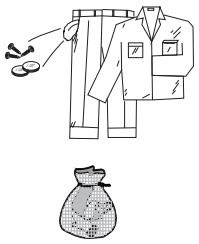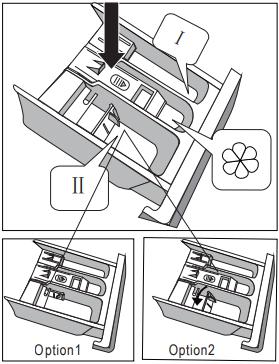It helps a lot to sort your laundry according its textile before washing to get the best wash results. Read care labels as they tell you how every item of dress should be washed according to the fabric of each garments. For example, oily soils require a higher temperature to lift the stain, whereas clothes with mud and blood stains is better washed in cold as heat can set the stain further into the fabric. Pretreating stains will also improve upon wash results. Always sort whites from colored fabrics, and be sure to wash lint givers (such as towels) separate to lint collectors (such as synthetics, socks and corduroy like fabric). Baby articles (baby clothes, nappies and towels) should be washed separately. There may be the risk of being infected if washed altogether with clothes. Use the cotton-intensive program to ensure thorough rinsing and cleaning without detergent residue. Loading Do not overload the machine, otherwise it may affect the washing. You can also get the maximum wash load from the shopping guide, or you can get washing tips on how to wash different fabrics
CAUTION
Before each wash be sure to check your pockets and remove loose items that may cause damage to both your washer and clothes. Close all zippers and hooks to prevent them from catching on other garments.
It is advised that bras are placed in a wash bag to prevent the steel wire from popping out into the drum and damaging the machine.

Avoid washing water proof fabrics (such as nappy covers, raincoats, ski suits, sleeping bags, etc.) that water can not penetrate easily. This may cause abnormal vibrations while rinsing and draining causing damage to the clothing and washing machine.
It is recommended to adopt a domestic low sud front loader powder or liquid. The amount of detergent varies depending on the size of the load, the amount of soiling and the type of laundry. For example, jeans and heavily soiled work clothes require more detergent, whereas towels require less. The detergent quantity should also reduce when washing knitted articles as their loose construction can promote an excess of bubbles. Follow the instructions on the back of the detergent to determine the correct dose for the laundry to be washed. Too much detergent does not contribute to better wash results as the rinse will not be as clean and efficient, it may also cause an excess of suds to flow into the dispenser compartment. This will unnecessarily causes environmental pollution and accumulation inside your washer. Too little detergent may also cause dirt and lint to settle back onto your clothes.
Detergent:Pre-detergent or washing powder
Main wash detergent :Rinse additive compartment (softener, bleach, etc.)
Option 1: Powder detergent
Option 2: Liquid detergent

Note: When using liquid detergent
Do not use gelatinous or thick liquid detergents.
Do not put more liquid over the maximum level.
The wash program should be selected based on the type of fabric, quantity of laundry, and level of soiling, in combination with the following wash temperature table:
90°C | Heavily soiled pure white cotton linen (eg: table cloths, towels, bed sheets) |
60°C | Moderately soiled linen, cotton and synthetic articles with a certain degree of decolorisation (eg: shirts, pajamas, underwear). |
40°C, 30°C, 20°C COLD | Normally soiled articles (including synthetics and wool) |
Turn the dial to select the corresponding program according to the wash load.
Select the required temperature according to the degree of soiling. Generally, the higher the temperature is, the more the power is consumed.
Select the required spin speed. The higher the spin speed is, the drier the textiles are spun, however more wrinkles will appear in the fabric. To protect clothes, a lower spin speed should be selected for delicate fabrics.
Once you’ve set the cycle, press the start button and let your washing machine do the work.
Finish the cycle, unload clothes from the washing machine as soon as possible to keep your laundry fresh.
